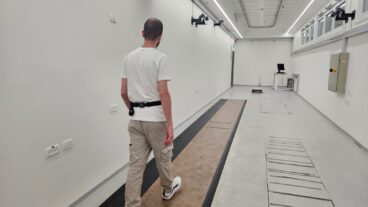Cellogic uses the “dead space” on your cell phone screen, when your phone goes into sleep mode, to steam Internet content.Mobile phones are supposed to make life easier. Now with Internet connectivity, cell phones are like an umbilical cord to our emails and favorite news sites. But a majority of the time is spent clicking though, looking for the sites and stories you want. Who has the patience and time for that?
An Israeli company Cellogic, founded in 2007, has found a new way to look at the “dead space” on your cell phone screen, when your phone goes into sleep mode. Cellogic has developed FlyScreen, an always-on application that lets you select widgetized content, streaming it constantly, without the need to click a single button.
FlyScreen lets you keep tabs on what your friends and followers are saying on Twitter, lets you catch – at a glimpse – profile updates on Facebook, or it feeds you the latest breaking headlines from around the world. Consuming little or no battery power, FlyScreen ensures that the content you want most will stay right before your eyes.
In the “Pit” at TechCrunch50
“You can just take the feed URL, and basically the content is unlimited,” says Cellogic’s CEO Itamar Weisbrod, who is based in Mevo Modiin, Israel. With seed money from Israel’s Internet guru Yossi Vardi, and angel investors in Israel, Canada and the US, Cellogic’s six-person team has $300,000 to get its platform off the ground. So far so good.
The technology was featured recently in the “Demo Pit” at TechCrunch50, a conference held in the US that showcases the best of the best technologies, and launches them in front of the industry’s most influential VCs, corporations, entrepreneurs and press.
TechCrunch is a news blog that serves the high tech industry, rating and reporting on emerging technologies and tech news. Investors read it to find the next big thing. The FlyScreen is destined to make everyone, including its investors, happy. Weisbrod tells ISRAEL21c: “We give the content people want to get, quickly, and on the fly.”
Better real estate than Times Square
Eventually Weisbrod, originally from Toronto, has plans for building it into a mobile syndication platform, saving companies money from having to produce their own. But essentially the solution is practical, simple and ingenious: FlyScreen takes the empty space on a darkened cell phone screen and turns it into very valuable real estate – real estate more valuable than a billboard at Times Square.
Naturally, advertisers who are always looking for new opportunities will be interested in Cellogic’s ad-funded model: “Because the widgets themselves are very customizable, it brings a lot of value to advertisers,” says Weisbrod. “Users are stating what they want to see. They are seeing the screen very often.”
But FlyScreen’s ads, like Google Adsense ads will be “relevant and non-intrusive,” assures Weisbrod, who’s also had interest from companies such as the home security provider SmartHome, which could use the technology to stream messages through its own customizable widget, instead of sending expensive SMSs to its clients.
For now, test-driving FlyScreen is by invitation only. But it’s bound to be streaming across your cell phone in the very near future.












